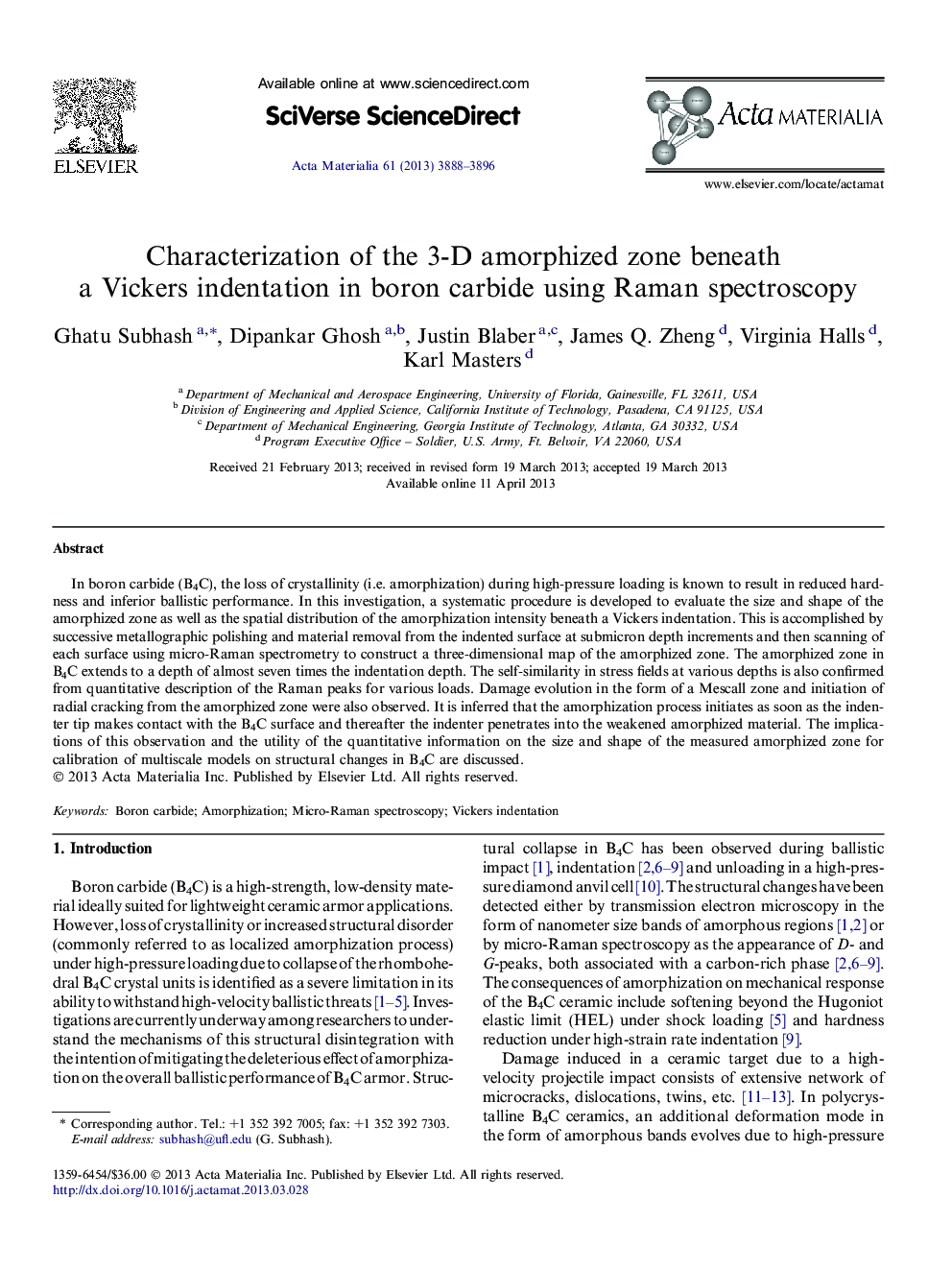| Article ID | Journal | Published Year | Pages | File Type |
|---|---|---|---|---|
| 1446132 | Acta Materialia | 2013 | 9 Pages |
In boron carbide (B4C), the loss of crystallinity (i.e. amorphization) during high-pressure loading is known to result in reduced hardness and inferior ballistic performance. In this investigation, a systematic procedure is developed to evaluate the size and shape of the amorphized zone as well as the spatial distribution of the amorphization intensity beneath a Vickers indentation. This is accomplished by successive metallographic polishing and material removal from the indented surface at submicron depth increments and then scanning of each surface using micro-Raman spectrometry to construct a three-dimensional map of the amorphized zone. The amorphized zone in B4C extends to a depth of almost seven times the indentation depth. The self-similarity in stress fields at various depths is also confirmed from quantitative description of the Raman peaks for various loads. Damage evolution in the form of a Mescall zone and initiation of radial cracking from the amorphized zone were also observed. It is inferred that the amorphization process initiates as soon as the indenter tip makes contact with the B4C surface and thereafter the indenter penetrates into the weakened amorphized material. The implications of this observation and the utility of the quantitative information on the size and shape of the measured amorphized zone for calibration of multiscale models on structural changes in B4C are discussed.
